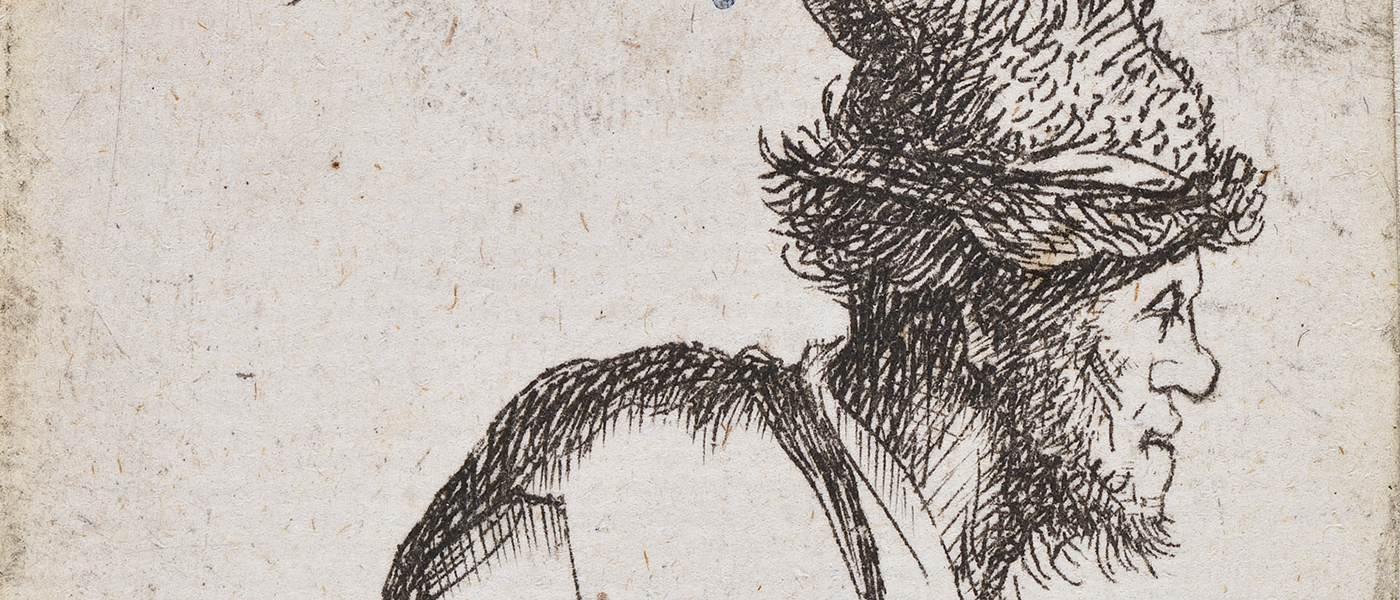
Recent Acquisitions
3 November 2017 – 28 January 2018
Hunterian Art Gallery
Admission free
This new exhibition showcases some of the latest additions to The Hunterian’s world-class art collection.
Featuring works by Rembrandt, Käthe Kollwitz, Charles Rennie Mackintosh, Elizabeth Blackadder and Alison Watt to name but a few, this in-focus exhibition highlights the diversity of The Hunterian’s collection and celebrates the generosity of its donors and funders.
The works on display demonstrate the growth of The Hunterian collections over the past few years enriching areas such as the Mackintosh collection, works on paper and Scottish art.
Many have been purchased with support from the Art Fund, the National Fund for Acquisitions, and the Alexander and Margaret Johnstone Fund. The Hunterian is also indebted to a number of West of Scotland donors whose continual support is gratefully acknowledged.
Rembrandt Harmensz van Rijn
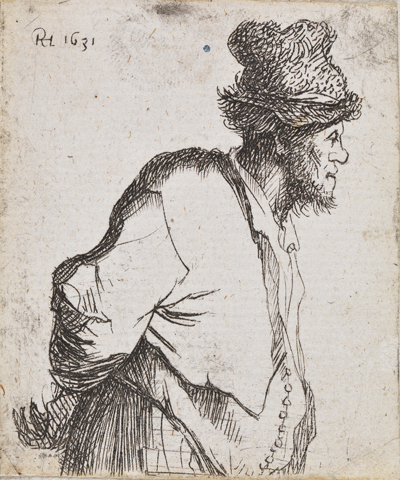 The Hunterian has more than 100 etchings by Rembrandt, amounting to about one third of his production. While the collection contains only a few of the greatest prints, its strength is the coverage of different subjects, from Biblical scenes to landscape and portraiture.
The Hunterian has more than 100 etchings by Rembrandt, amounting to about one third of his production. While the collection contains only a few of the greatest prints, its strength is the coverage of different subjects, from Biblical scenes to landscape and portraiture.
This early work belongs to a group of informal yet extremely empathetic sketches of urban beggars that he executed in and around 1630, when he was a mere 24 years old.
Image: Rembrandt Harmensz van Rijn, Peasant with hands behind his back, 1631.
Bequeathed by Elnora Ferguson through the Art Fund, 2010.
Käthe Kollwitz
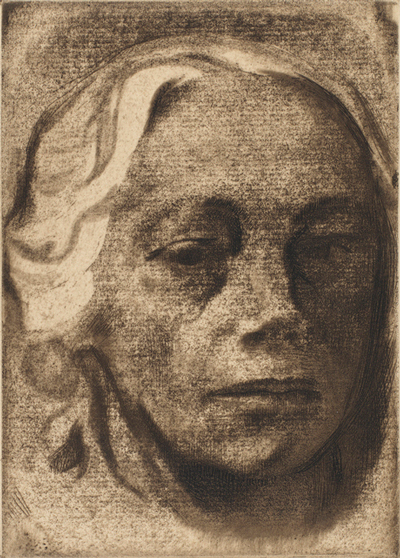 Kollwitz is one of the greatest printmakers. Her dramatic imagery began with sets of prints telling a story, in the footsteps of Max Klinger. During World War I, she joined the protests of socialists, such as Liebknecht, whose murder she memorialised in a woodcut. Above all, Kollwitz is associated with images of individual human suffering. Like Rembrandt, Kollwitz regularly produced self-portrait prints. In all of these we see a powerful reflection of the sadness she witnessed.
Kollwitz is one of the greatest printmakers. Her dramatic imagery began with sets of prints telling a story, in the footsteps of Max Klinger. During World War I, she joined the protests of socialists, such as Liebknecht, whose murder she memorialised in a woodcut. Above all, Kollwitz is associated with images of individual human suffering. Like Rembrandt, Kollwitz regularly produced self-portrait prints. In all of these we see a powerful reflection of the sadness she witnessed.
Image: Käthe Kollwitz, Selbstbildniss (Self-portrait), 1912.
Purchased, 2015.
Charles Rennie Mackintosh
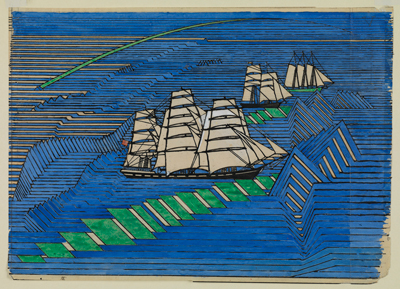 During his London years 1915–1923, Mackintosh designed striking advertising labels and business cards for the Northampton manufacturer Bassett-Lowke, who specialised in construction sets, model railways, boats and ships. These stand in contrast to the stylised figurative graphics of his early work and rank among the most avant-garde British graphics of the period.
During his London years 1915–1923, Mackintosh designed striking advertising labels and business cards for the Northampton manufacturer Bassett-Lowke, who specialised in construction sets, model railways, boats and ships. These stand in contrast to the stylised figurative graphics of his early work and rank among the most avant-garde British graphics of the period.
This watercolour, closely related to a 1922 Christmas card for Mr and Mrs Bassett-Lowke, reflects their interest in ships as well as their involvement with the model and engineering business.
Image: Charles Rennie Mackintosh, Sailing Ships, c.1922.
Bequeathed by Margaret Davidson, 2014.
Elizabeth Blackadder
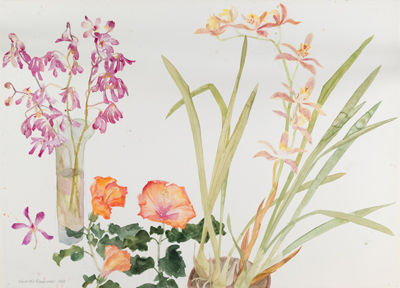 This watercolour by one of Scotland's greatest living artists was gifted through the Cultural Gifts Scheme and represents a major addition to our collections. It is a fine, early example of the artist's exploration of flowers, a reflection of her lifelong interest in botany. In these large-scale works the artist plays on tension between discipline and spontaneity, between artistic labour and freshness of vision, sharing with predecessors such as Mackintosh a modernist concern for colour and decoration.
This watercolour by one of Scotland's greatest living artists was gifted through the Cultural Gifts Scheme and represents a major addition to our collections. It is a fine, early example of the artist's exploration of flowers, a reflection of her lifelong interest in botany. In these large-scale works the artist plays on tension between discipline and spontaneity, between artistic labour and freshness of vision, sharing with predecessors such as Mackintosh a modernist concern for colour and decoration.
Image: Elizabeth Blackadder, Orchids, 1983.
Accepted under the Cultural Gifts Scheme by HM Government and allocated to the Hunterian Art Gallery, 2015. Donated by Dr Sheila Ross.
Alison Watt
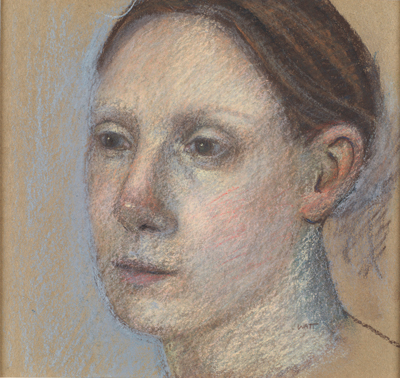 This small head study is the first work by this important Glasgow trained painter to enter the collection. It dates from the memorable, early phase of the artist’s work. First shown at Flowers East in 1995, it represents an actress friend who posed when Watt needed to design heads for a large figure painting. The making of template studies on paper to plan work on canvas goes back to Renaissance studio practice.
This small head study is the first work by this important Glasgow trained painter to enter the collection. It dates from the memorable, early phase of the artist’s work. First shown at Flowers East in 1995, it represents an actress friend who posed when Watt needed to design heads for a large figure painting. The making of template studies on paper to plan work on canvas goes back to Renaissance studio practice.

